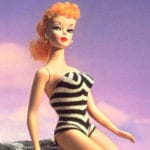 Mysteries
Mysteries  Mysteries
Mysteries  History
History 10 Surprising Stories About the Texas Rangers
 Humans
Humans 10 Philosophers Who Were Driven Mad by Their Own Theories
 Miscellaneous
Miscellaneous 10 Video-Game-Worthy Weapons and Armors from History
 Weird Stuff
Weird Stuff 10 Psychics Who Accurately Predicted Wartime Events
 The Arts
The Arts 10 Pieces of Art Inspired by a Broken Heart
 Health
Health 10 Science Fiction-Sounding New Medical Treatments
 History
History 10 Surprising Facts About the Father of Submarine Warfare
 Space
Space Ten Astonishing New Insights into Alien Worlds
 Weird Stuff
Weird Stuff 10 Bizarre Summer Solstice Rituals Still Practiced Today
 Mysteries
Mysteries Top 10 Haunting Facts About the Ghost Ship MV Alta
 History
History 10 Surprising Stories About the Texas Rangers
 Humans
Humans 10 Philosophers Who Were Driven Mad by Their Own Theories
Who's Behind Listverse?

Jamie Frater
Head Editor
Jamie founded Listverse due to an insatiable desire to share fascinating, obscure, and bizarre facts. He has been a guest speaker on numerous national radio and television stations and is a five time published author.
More About Us Miscellaneous
Miscellaneous 10 Video-Game-Worthy Weapons and Armors from History
 Weird Stuff
Weird Stuff 10 Psychics Who Accurately Predicted Wartime Events
 The Arts
The Arts 10 Pieces of Art Inspired by a Broken Heart
 Health
Health 10 Science Fiction-Sounding New Medical Treatments
 History
History 10 Surprising Facts About the Father of Submarine Warfare
 Space
Space Ten Astonishing New Insights into Alien Worlds
 Weird Stuff
Weird Stuff 10 Bizarre Summer Solstice Rituals Still Practiced Today
10 Tragic Events That Created Iconic Pieces Of Pop Culture
The world can be a terrible place, but there are always things to cheer us up. Amazingly, they sometimes overlap. A great number of the things we turn to every day to make us happy were built on terrible tragedies and torture.
In fact, some of the most iconic pieces of pop culture were created in surprisingly dark circumstances. Next time, you belt out “Dancing Queen” or tinker with LEGOs, remember that your joy could not exist without someone else’s pain.
10 Nuclear Fear Inspired “Do You Hear What I Hear?”
“Do You Hear What I Hear?” is one of those Christmas songs that seems like it has been around since the birth of Christ. In reality, it’s only as old as the “Monster Mash.” This calming and simple song was not written solely to commemorate the religious holiday. It initially served as a call for peace in the middle of a nuclear stalemate.
Noel Regney and Gloria Shayne Baker wrote the song as a response to the Cuban Missile Crisis and possible Armageddon. For 13 days, the world was filled with existential dread. While they were in the studio, the producer took a break from recording to turn on the radio to see if World War III had started.
Regney and Baker needed to take their minds off the situation in Cuba, so they went for a walk. Along the way, the couple saw two mothers pushing their babies in strollers. The songwriters were so struck by this moment of innocence that they wrote the opening line right then: “Said the night wind to the little lamb.”
The song became a Christian classic, but it’s a universal message for people all over the world to put aside their differences. Regney and Baker’s paranoia appears in the song’s lyrics, and now you’ll be one of the few who understands it.
Though many interpret the line “a star, a star, dancing in the night with a tail as big as a kite” as a reference to the star above Bethlehem, the line hints at the nuclear missiles that inspired the song. The fear in the song still causes Baker and Regney to cry when they sing it today.[1]
9 A Cult Created the Super Bowl Halftime Show
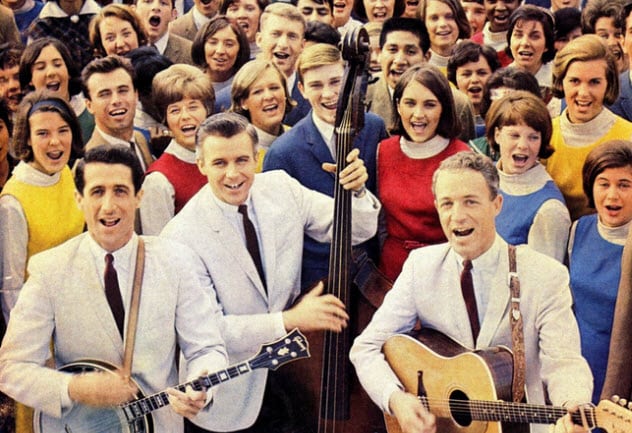
Few things cause more devotion than the Super Bowl. Fans go to such ridiculous extremes to root for their respective teams that the fanaticism is cultlike. That is why it is so appropriate that the most celebrated football game of the year incorporated a real cult into the middle of the game for years.
For the first three decades, the Super Bowl halftime show was mostly done by local area marching bands or jazz legends singing classics. The only modern band allowed to sing was Up with People. Their songs called for world peace and utopianism. That viewpoint was rooted in a controversial religious movement called Moral Rearmament (MRA).
MRA was founded to stop the spread of liberal counterculture forces in the late 1960s. That is why this group of square-jawed folkies was receiving funds from companies as varied as Exxon, Halliburton, Pfizer, and General Electric.
The conservative philosophy limited many of the members’ rights. Every facet of their lives was controlled by the MRA. The MRA forced the group to exercise for hours each day to the point of exhaustion. Gay members of the group were frequently beaten. Sex of any sort was strictly forbidden. Those who engaged in the activity were abandoned in random cities while touring.[2]
Despite the toxic culture of the group, Up with People performed at the Super Bowl four times. Their productions were nonsensical and over the top. By 1986, NFL commissioner Pete Rozelle had grown tired of the shtick. As these shows were so hollow and campy, the NFL turned to popular musicians to supply the theatrics.
In 1991, New Kids on the Block became the first contemporary artists to headline the halftime show. Michael Jackson’s performance in 1993 turned the Super Bowl halftime into a major phenomenon, thus paving the way for wardrobe malfunctions and “Left Shark” decades later.
8 Stephen Colbert Became A Comedian Because His Family Died
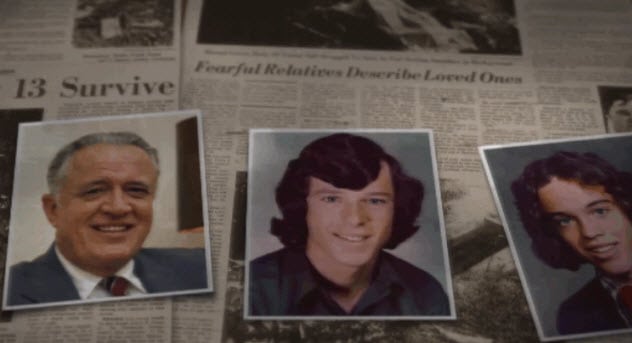
Whether working on The Daily Show, The Colbert Report, or his current stint as the host of The Late Show, Stephen Colbert is one of the most popular comedians of the past few decades. He may have brought a lot of joy to millions of people, but his personal life is filled with heartbreak.
Colbert got his start in comedy as a way of handling the grief of losing his father and two brothers on the same day. On September 11, 1974, Eastern Air Lines Flight 212 encountered thick fog. The pilots had been distracted by a conversation when they were caught off guard by the fog. As they were unaware of their settings, the plane crashed. Seventy-two of the 82 people aboard died immediately. Three others died later from their injuries.
The youngest of 11 children, Stephen was the only one still living with his parents at the time of the crash. At only 10 years old, Stephen helped his mother get through her grief.
Driving back from the funeral, he noticed that one of his sisters was laughing so hard that she fell over in her seat. In that moment, Stephen understood the ability of comedy to drive out all despair. His interest in comedy was spurred on by listening to some of the albums left behind by his brothers. For the next eight years, Stephen dedicated his life to comedy. He has had some success with it recently, too.[3]
7 Nazi Experimentation Birthed ABBA
ABBA is a lighthearted, fun, beloved disco band. None of that describes the Nazis, but one of the four members of ABBA would not exist if it wasn’t for the Nazi occupation of Norway. Starting in 1940, the Nazis implemented a program where the army was ordered to conceive as many children as possible with Aryan Norwegian women. This practice resulted in thousands of births, including Anni-Frid Lyngstad (better known as “Frida”).
Many of these children were taken from their parents and forced into reeducation rooms. In these old familiar rooms, children would play, eat, and live under the guidance of Nazi soldiers. As the Third Reich invaded other countries, the program eventually devolved into wholesale kidnapping. The kidnapped children were placed into orphanages where they couldn’t escape if they wanted to. If they failed to be racially pure, they were executed.
Following the war, these children were returned to their communities. Many of the mothers and babies were ostracized due to their Nazi relationships. When Frida was young and sweet and only 17 months old, she and her mother were driven out of town.[4]
When she arrived in Sweden, Frida still felt isolated and without a real home. By 1971, she had started dating Benny Andersson. He asked her to join his new band, ABBA, which included Agnetha Faltskog and Bjorn Ulvaeus. In the end, ABBA conquered Europe and America better than the Nazis ever could.
6 LEGO Rebuilt The Founder’s Life Brick By Brick

LEGOs (as they’re colloquially known in the US) are such a quintessential symbol of childhood that the company has sold over 400 billion of their namesake bricks. The company’s success has allowed them to branch off into equally popular video games, movies, and even theme parks.
However, anybody who’s accidentally stepped on one in the night already knows how much pain LEGO can cause. Behind the facade of childhood fun, the early history of LEGO was driven by a series of disasters that plagued the founder.
In the early 1900s, Ole Kirk Christiansen was simply his village’s carpenter. At his workshop, he produced furniture, ladders, or stools. That business ended in 1924 when his son accidentally set some wood chips in the shop on fire.
The fire spread and destroyed Christiansen’s workshop and the family’s house. Even though he was practically broke and now homeless, Christiansen decided to continue on. He soon encountered two more obstacles.[5]
In 1929, the collapse of the US stock market triggered a global depression. Then, in 1932, Christiansen’s wife died. Economic and personal disasters made him fire most of his staff and reduce the size of his operation. His social worker argued that the business should no longer focus on furniture. Instead, he should turn to toys. They required less wood, were cheaper to manufacture, and could potentially cheer up Christiansen.
For many years, Christiansen barely made a profit, even declaring bankruptcy until his brothers bailed him out. Following the German occupation of Denmark in the 1940s, Christiansen’s factory burned again. Due to limited resources, he was forced to switch from wood to plastic. This allowed Christiansen to mass-produce toys like never before, including a series of interconnecting bricks.
5 Robert Kennedy’s Assassination Changed Hip-Hop
The tragic and untimely death of Robert Kennedy had tremendous consequences on the politics of the 1960s. However, the event’s real legacy may be the roundabout way that his death influenced hip-hop.
In the late 1960s, Michael Viner joined Robert Kennedy’s campaign as an aide. There, he met famed football player Rosey Grier, who was working security for Bobby Kennedy. Grier was the one who wrestled the gun out of Sirhan Sirhan’s hand during the assassination. Grier and Viner had joined the campaign with hopes of working alongside Kennedy in Washington. When Kennedy died in California, Grier and Viner stayed there.
No longer employed, the two men went into the movie business. Grier starred in and Viner produced the soundtrack for a forgettable B movie, The Thing with Two Heads. On the soundtrack, they had a minor hit with “Bongo Rock.” Building from that success, Viner formed the group “Incredible Bongo Band.” As a fan of surf rock, he made the band record a cover of “Apache” by Bert Weedon.
The Incredible Bongo Band’s version of “Apache” would go on to be known as “the national anthem of hip-hop.” Popularized by DJ Kool Herc, “Apache” was the go-to song for his block parties. It was the first song that “Grand Wizzard” Theodore scratched, pioneering turntablism.[6]
By doing so, he turned it into the sound of the genre. Hundreds of artists—including Afrika Bambaataa, Grandmaster Flash, Nas, Kanye West, LL Cool J, and even MC Hammer—would go on to sample it.
4 The Chestburster Scene In Alien Killed Its Creator
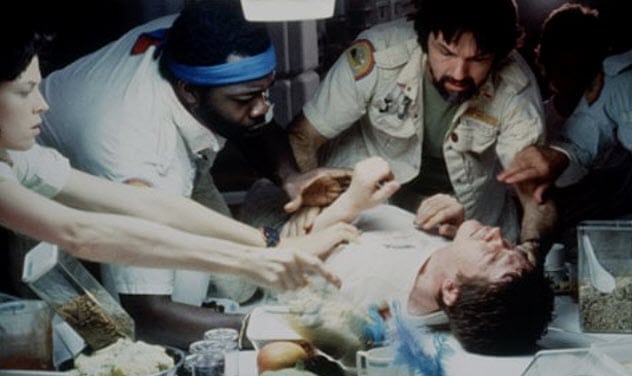
It is one of the most disturbing twists in all of cinema. The kindhearted Kane sits down to eat. While he is minding his own business, he suddenly feels a terrible pain in his side. His body ruptures. Eventually, his bubbling insides kill him at far too young an age. That is the horrific story of Kane and the man who came up with the scene, Dan O’Bannon.
O’Bannon wrote the screenplay for Alien. For the famous chestburster scene, he drew upon his own struggle with Crohn’s disease. Chris Foss and O’Bannon were eating fast food one day. As a result of the disease, O’Bannon had digestive problems. He described the experience as a little beast inside him.
In later conversations with Alien’s designer, H.R. Giger, O’Bannon said that he wished his abdominal pain could just leave through his stomach. These two ideas were synthesized into one of the most shocking scenes in movie history.[7]
In a cruel irony, O’Bannon suffered the same fate as Kane. O’Bannon’s stomach condition went undiagnosed for a long time. Though he experienced stomach troubles chronically throughout his life, he did not seek proper medical assistance until it was too late. In 2009, O’Bannon succumbed to Crohn’s disease. He was only 63.
3 The Lord Of The Rings Exists Due To Two World Wars
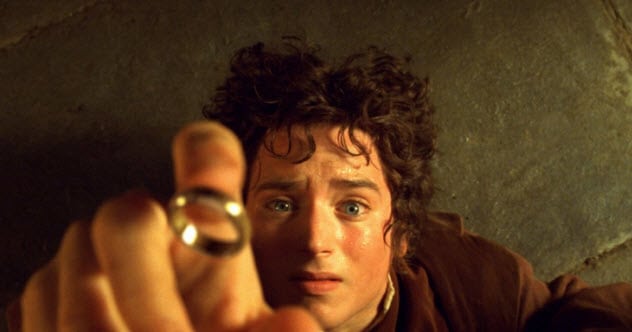
The Lord of the Rings is not really a fantasy story. The ultimate tale of good versus evil, the corrupting nature of authority, and the destructive force of power may feature orcs, wizards, and elves, but it is still grounded in J.R.R. Tolkien’s personal struggles.
The beloved trilogy is a thinly veiled allegory for the unprecedented destruction of World War I. There are direct connections between World War I and the books. For example, Gandalf’s famous exclamation of “You shall not pass” is a rewording of the battle cry of the Verdun, “They shall not pass.” Other elements are more tangential. Samwise Gamgee was inspired by Tolkien’s companionship with fellow soldiers.
Tolkien’s friendships in the trenches were a major reason that the stories were finally written. To keep his spirits up, he entrusted an early version of Middle Earth to three former school friends and soldiers. After two of those men died in the Battle of the Somme, Tolkien felt forced to finish his story in their honor.
The grief did not sustain Tolkien’s vision for too long. His motivation only returned thanks to another world war. During World War II, it was time for Tolkien’s son to serve England. Christopher Tolkien was stationed in South Africa. J.R.R. sent fragments of the stories to Christopher to stave off boredom.[8]
No matter how personal Tolkien’s manuscripts were, there was still no guarantee of success. Initially, he wanted to publish the trilogy as one sprawling epic novel. The text would have been more than 1,000 pages, seriously hurting any chance of it becoming a phenomenon.
As it was so thick, it would have been equally expensive. Written in the aftermath of World War II and with the economy in shambles, it was unlikely that people would have had much disposable income to plop down for a hobbit’s epic quest. Due to a paper shortage in World War II, the publisher insisted that the book be divided into thirds. This ensured that the books would be cheaper and thus more popular.
2 Darth Vader Is Luke Skywalker’s Dad Because Of Cancer

Though the quote is often misremembered, Darth Vader telling Luke Skywalker that he is Luke’s father is one of the most iconic moments in any movie. From a certain point of view, the line changes the entire direction of the franchise.
Without this twist, Vader’s sacrifice and redemption in Return of the Jedi would not be nearly as impactful. It is such an essential part of the movies that one would assume that this had been the plan from the beginning. In reality, the line was scribbled as a last-minute change because the original scriptwriter had just died.
Following the success of Star Wars, George Lucas decided that he didn’t want to write the sequel. He passed the responsibility to Leigh Brackett. She only had a few months left to live due to a terminal case of cancer, but she was able to churn out a script before succumbing to the disease. Her direction for the movie was very different than what George Lucas could have predicted.[9]
She conceived Vader as the owner of a steel castle protected by demons, gargoyles, and a lava moat. Later films in the franchise would incorporate some of these ideas. But at the time, Lucas thought the castle was ridiculous.
With Leigh Brackett’s passing, he rewrote the draft himself. Revising the script, Lucas first came up with many of the notable scenes from the movie, including Han getting frozen in carbonite and the character of Boba Fett. Of all the changes, the most important idea was to turn Star Wars into a galactic game of family feud.
1 Freddy Krueger Is Based On A Bizarre True Story
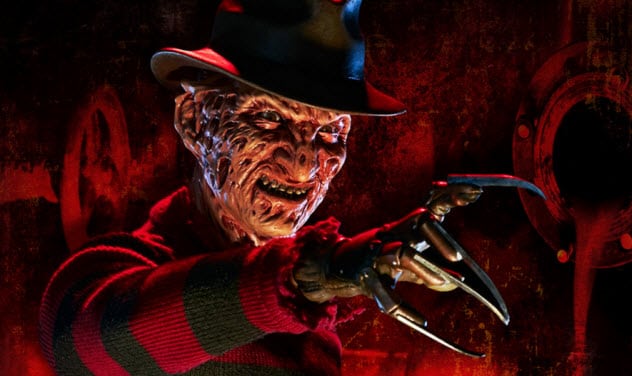
Wes Craven’s A Nightmare on Elm Street is arguably the greatest horror movie of all time. Not because it debuted one of cinema’s most fearsome characters with Freddy Krueger, but because it turned the real deaths of untold Southeast Asian men into a blockbuster.
Wes Craven drew inspiration from many sources, including a childhood bully, a disfigured homeless man whom Craven happened to see, and the song “Dream Weaver.” But the darkest was an article that he read in the Los Angeles Times.
In the wake of the Cambodian genocide, many people fled Asia to settle in California. Separated by an ocean, their physical dangers were gone. But they still brought with them the emotional weight of what they had seen. The mental stress manifested itself into terrible nightmares.
These nightmares were so traumatic that even people in perfect health would die in their sleep. To prevent any further distress, people would go days without sleeping. When they finally crashed from their exhaustion, they would have one more scream and then die.[10]
The bizarre trend was known as Sudden Unexpected Death Syndrome (SUDS). In Los Angeles, three refugees who escaped the Khmer Rouge died in this manner. The deaths were sensationalized in the local paper.
Back in mainland Asia, the deaths from the disorder were too common to be publicized. Between 1982 and 1990, 230 people died from SUDS in Thailand alone. Freddy Krueger could only have dreamed of killing that many.
If you thought this list was a disaster, feel free to send any questions or comments to Nate Yungman at [email protected]. If you thought this article was iconic, then you can contact the author on Twitter: @nateyungman.
For other bizarre stories of real life affecting pop culture, check out 10 Works Of Pop Culture Affected By Real-Life Events and 10 Fans Who Had An Impact On The Pop Culture They Loved.





